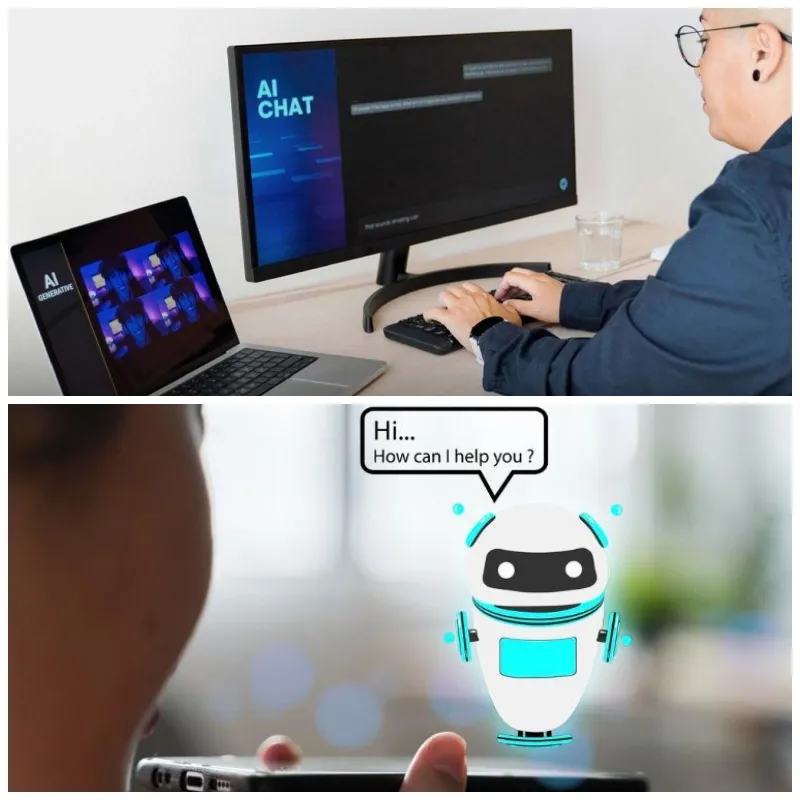
Tech Tip: Protecting Your Privacy from AI Chatbots

In the age of artificial intelligence, interacting with chatbots has become second nature for many. Whether you’re asking for advice, summarizing reports, or simply having a casual conversation, it’s important to be aware that your interactions might be used to improve the very AI systems you’re engaging with. This raises privacy concerns, especially when sensitive information is involved. However, some companies allow users to opt out of this data training process. Here’s what you need to know to protect your privacy.
Why Your Conversations Matter
AI models that power chatbots are trained on vast amounts of data, including content scraped from the internet—blog posts, news articles, social media comments, and possibly even your chatbot interactions. This data helps these models predict responses and improve over time. However, this practice has raised significant concerns, particularly regarding consent and the potential for personal information to be used without your knowledge.

How to Opt-Out of Data Training
Thankfully, some companies offer ways to opt out of contributing your conversations to AI training. Here’s a quick guide on how you can manage your data across different platforms:
1. Google Gemini
Google uses conversations with its Gemini chatbot to train its machine learning systems, with chats kept by default for 18 months. Users can adjust this setting to stop future conversations from being recorded or delete previous ones.
How to Opt Out: Visit the Gemini website, go to the Activity tab, and select the option to turn off recording or delete your chat history. Note that conversations flagged for human review may not be deleted.
2. Meta AI
Meta’s AI, integrated across Facebook, WhatsApp, and Instagram, uses data from these platforms to train its models. However, private messages are not included. Residents of the EU and UK have the right to opt out due to stricter privacy regulations.
How to Opt Out: For eligible users, navigate to Facebook’s privacy settings, find the generative AI section, and fill out the opt-out form. U.S. users can request data removal via a separate form, though approval isn’t guaranteed.
3. Microsoft Copilot
Microsoft Copilot doesn’t offer an opt-out for personal users, but users can delete their interaction history.
How to Manage Data: Go to your Microsoft account settings, find the Copilot interaction history, and delete it.
4. OpenAI’s ChatGPT
OpenAI allows users to disable data sharing for training purposes. Once disabled, your conversations will not be used to improve their AI models.
How to Opt Out: Visit the settings menu in your ChatGPT account, go to Data controls, and disable the option to “Improve the model for everyone.” Your chats will be kept for 30 days for monitoring purposes only.
5. Grok on X (formerly Twitter)
Elon Musk’s Grok chatbot uses data from X for training, with the setting enabled by default.
How to Opt Out: On the X desktop browser, go to Settings > Privacy and Safety > Grok, and untick the box. Mobile users currently cannot opt-out via the app.
6. Claude
Anthropic’s Claude chatbot does not use personal data for training by default. Users can, however, choose to allow specific interactions to be used for model improvement.
How to Manage Data: Only interactions explicitly marked with a thumbs up/down or flagged for safety reviews will be used for training.
Take Control of Your Data
As AI technology advances, being mindful of how your data is used becomes increasingly crucial. By understanding the options available to you, you can take steps to protect your privacy while still benefiting from the convenience of AI chatbots. Always review the privacy settings of the platforms you use and consider opting out where possible to keep your information secure.






